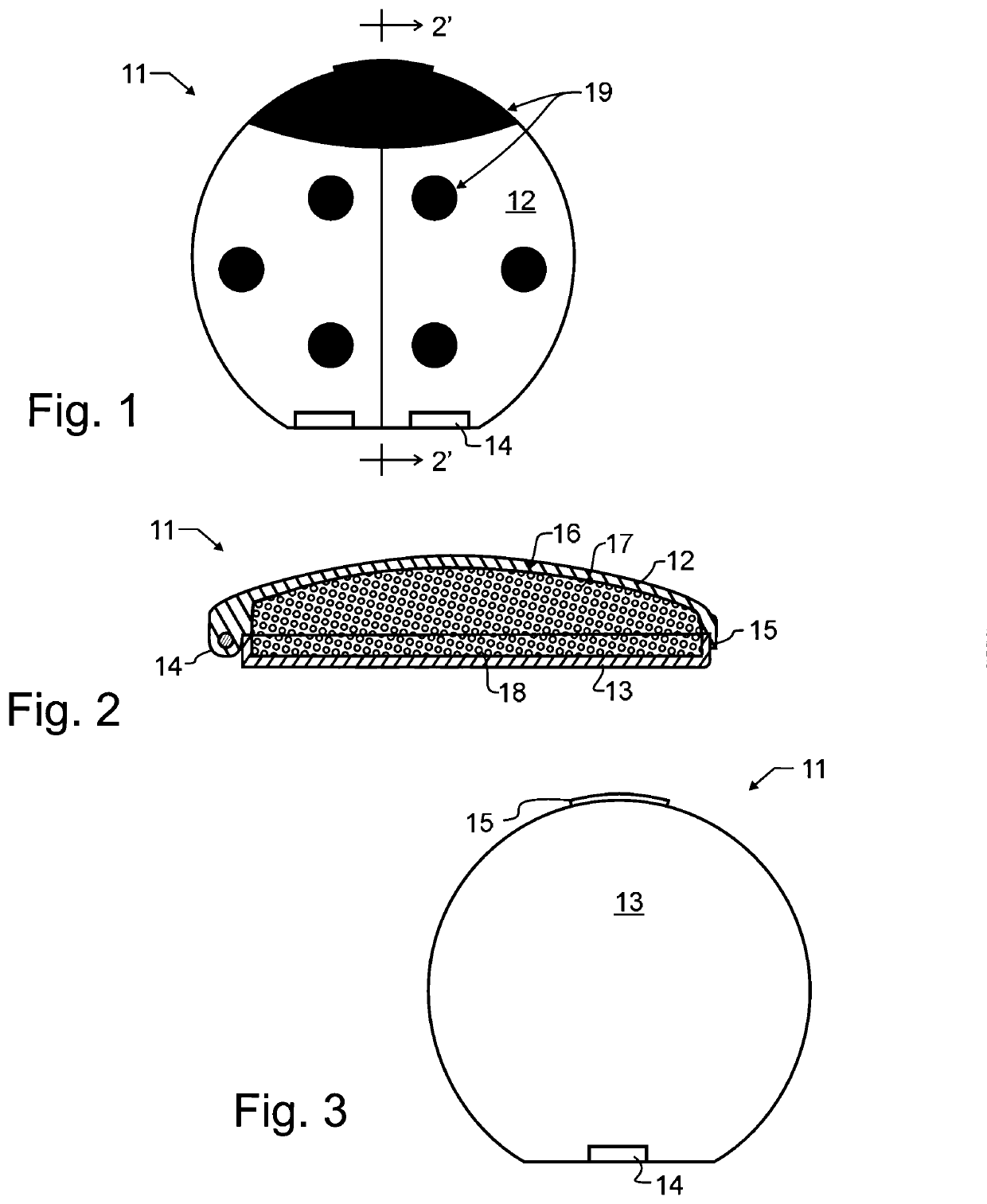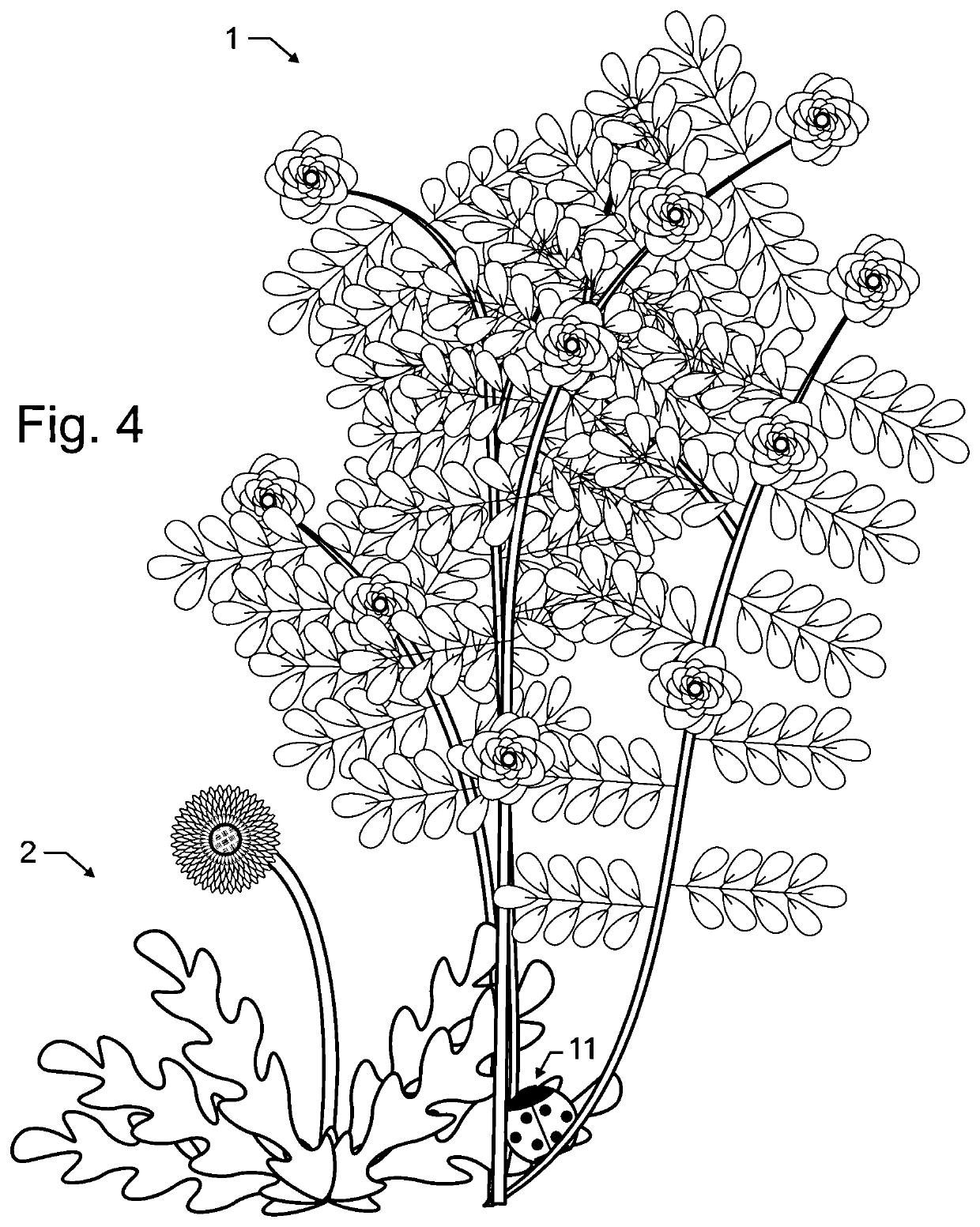Weed-e-bug
a technology of weeds and bugs, applied in the field of plant husbandry, can solve the problems of affecting the ornamental appearance of cultivated land, affecting the cultivated ground, and terminating the desired plant, and achieves the effects of low manufacturing cost, simple and quick application, and high application efficiency
- Summary
- Abstract
- Description
- Claims
- Application Information
AI Technical Summary
Benefits of technology
Problems solved by technology
Method used
Image
Examples
Embodiment Construction
[0040]Manifested in the preferred embodiment, the present invention provides a quick and simple to use, reusable, environmentally isolated liquid applicator that can apply a treatment liquid for an extended duration to a weed, in an aesthetically pleasing manner. As illustrated in FIGS. 1-3, preferred embodiment fluid applicator 11 generally comprises two outer protective shells 12, 13, joined on one side by a hinge 14. When the two outer protective shells 12, 13 are closed such as illustrated in these Figures, by pivoting one with respect to the other about hinge 14, on an interior they define a sealed containment environment 16. To secure preferred embodiment fluid applicator 11 in a closed position, and thereby isolate sealed containment environment 16 from the external environment, a clasp 15 is provided. The inside of both outer protective shells 12, 13 contain liquid retaining materials 17, 18, respectively.
[0041]Outer protective shells 12, 13 may be of numerous geometries and...
PUM
 Login to View More
Login to View More Abstract
Description
Claims
Application Information
 Login to View More
Login to View More - R&D Engineer
- R&D Manager
- IP Professional
- Industry Leading Data Capabilities
- Powerful AI technology
- Patent DNA Extraction
Browse by: Latest US Patents, China's latest patents, Technical Efficacy Thesaurus, Application Domain, Technology Topic, Popular Technical Reports.
© 2024 PatSnap. All rights reserved.Legal|Privacy policy|Modern Slavery Act Transparency Statement|Sitemap|About US| Contact US: help@patsnap.com










